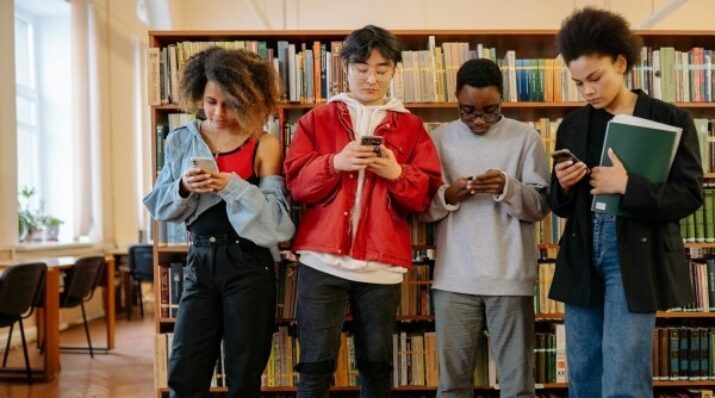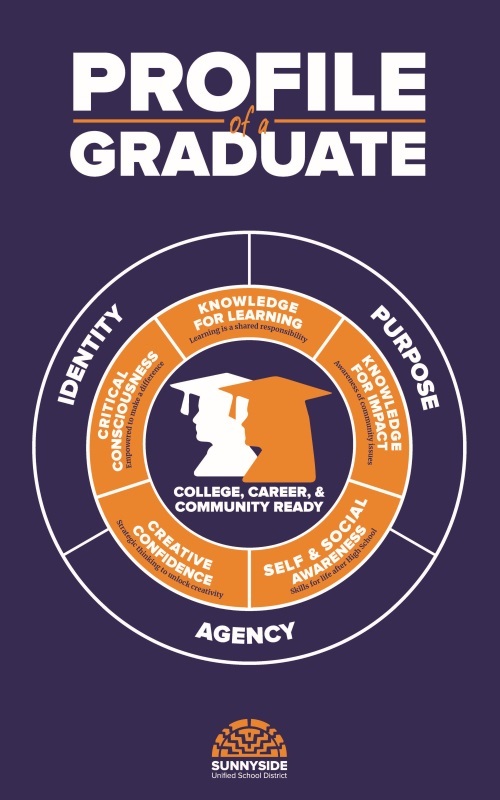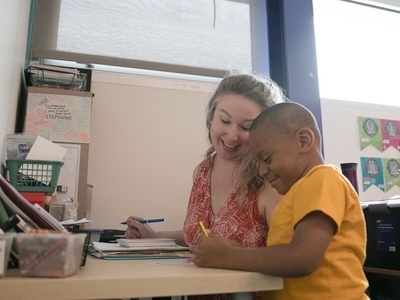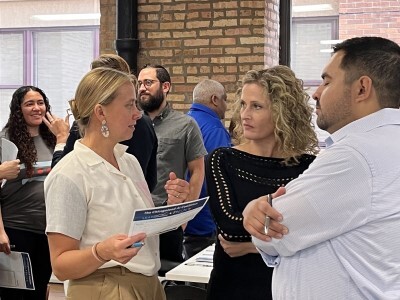5 Reasons Schools Should Take a Restricted but Learning-Centered Approach to Cellphones and AI Instead of Outright Bans
Topics

Educators often take advantage of educational technologies as they make the shifts in instruction, teacher roles, and learning experiences that next gen learning requires. Technology should not lead the design of learning, but when educators use it to personalize and enrich learning, it has the potential to accelerate mastery of critical content and skills by all students.
If it’s not the responsibility of schools to help young people understand and manage the powerful—and addictive—technologies in their pockets, then whose job is it?
"So seniors will say, ‘Let me understand this. I can vote, I can drive, I can get a job—but I can't have my cellphone out in school?’" In 18 states and thousands of school districts: sorry, seniors, but yes, that is exactly the case.
That contradiction, articulated by Pam Betten, assistant superintendent in Sunnyside Unified School District (Tucson, Arizona), is one of the reasons why her school system restricts but doesn’t ban cellphone use in its schools—and likely is heading toward a similar approach with regard to AI.
“The legacy of public education has always been around compliance and completion,” Betten says. But in her school district, she asserts, “We are learning institutions. That's what schools are for. And so, we’re trying to lean more heavily on the learning of what’s appropriate and how to self-regulate, rather than this idea of enforcement."
Sunnyside’s policy on cellphone use pre-dates Arizona’s passage last year of its statewide cellphone ban-or-restrict policy. There are teachers in the district, and some parents in the community, Betten says, who advocate for an outright ban. But she views Sunnyside’s cellphone approach as part-and-parcel with the district’s determined, all-encompassing embrace of its graduate profile—in particular, its core attributes of Identity, Purpose, and Agency:
“All of these [societal] things, be it the cellphone, be it AI, whatever the next latest-and-greatest thing is: they do not live outside of our graduate profile! Identity, purpose, and agency. Arguably, you know, these tools help students on all three, because now they're using the most powerful tools that humankind has produced. Otherwise, you're saying: ‘Nope, inside of these walls, you can't use those things’?”
In this school district, they’re saying something else: In 2025, it is vital that students learn to understand and manage these powerful technologies, and it is very much the job of their public school to help them do that.
A Very Hot Debate
Cellphone use in schools is hotly debated right now, and rightfully so. It’s a complex issue that presents difficult challenges to teachers trying to compete for their students’ attention, when the competition is cellphone screens, which occupy many of those students for nearly half their waking hours. I have felt deeply conflicted about this issue myself and am thankful that my three daughters got through high school before smartphones and social media became, in so many ways, the dominant relationship in the lives of most teenagers.
And then I visited Sunnyside. I was there as a co-organizer of an NGLC Learning Excursion, experiencing a multi-day deep-dive into all things Sunnyside along with 75 educators and high school students from nine New England communities.
What I saw there was convincing. Here are five takeaways from our visit, and followup conversations, that made me appreciate the wisdom of Sunnyside’s approach.
1. The goal of public education is learning and human development for today’s world. Banning cellphones and AI teaches the wrong lessons and ignores the right ones.
“I learned early on how to play the game of school.” We have heard versions of that refrain constantly from students in the 15 years since NGLC was founded. “Figure out what the teachers want, do the minimum, hand it in, pass the test.” The implication from these students has been: “Then I can get back to my real life, the one I value, outside of school.”
The bone-chilling reality is that this is the pervasive attitude of public high school students in the U.S.: school is “tiring, stressful, and boring.” Many also add: “irrelevant.” Perhaps the schools and districts and states banning cellphones should ask: Might this be a reason why we have an engagement problem (and likely an attendance problem)... and why our students keep diving into their phones?
The teachers who best exemplify teaching in Sunnyside’s high-engagement, agency-catalyzing, student-centered way, Betten says, “don’t have trouble with their kids on the phone because of the way their classrooms function. Kids have phones. They have them out sometimes, but it’s not an issue.” Sunnyside has learned that in classrooms where cellphones are a problem, the cause is often an instructional one. “Could be that it’s a brand new teacher,” Betten says, “and they need some management help. If the instruction is weak, well, we can tell the kids [to put away their phones] all day long. But just because they put their cellphone away doesn’t mean they’re engaged in learning.”
Can we repeat that? “Just because they put their cellphone away doesn’t mean they’re engaged in learning.” By ensuring that their students’ days in school actually merit their engagement, Sunnyside is addressing root causes: the endemic boringness and apparent irrelevance of too much teaching and learning in the nation’s high schools. When schools ban cellphones, they are simply pasting a band-aid on a symptom, not solving the real problem.
“All we’re saying is: We want you to use it so that it actually helps you to think and operate better and smarter. So that it doesn’t just become a substitute for the hard work of that improvement.”
2. Many high schools envision their graduates as collaborative, communicative lifelong-learners and creative problem-solvers. Shouldn’t that vision include helping them learn how to leverage the power and manage the risks of the incredible technology they routinely access—like most adults—outside of school?
Today’s middle and high school students in the U.S. are true digital natives. In their lives outside of school, they turn to their cellphones (and increasingly to AI) for almost everything: connecting with friends, entertainment, news, directions, problem-solving—even, lately (courtesy of AI), companionship. As one Sunnyside teacher put it to me during our visit there last spring: “For many kids, their cellphone is the dominant relationship of their life. If we’re not helping them learn how this technology is designed to make them addicted to it, and how to manage it effectively…. then who is?”
Pam Betten takes it further. Literally everything Sunnyside does, she says, is guided by the district’s graduate profile (see graphic). The heart and soul of that north-star vision, she continues, is the Identity-Purpose-Agency triad. “That’s the part of the profile that everyone in this district knows,” she says. Sunnyside’s approach to cellphones and AI is also guided by their profile. The explicit goal is to help students develop the agency and self-regulatory skills they need—that we all need—to manage use of cellphone and AI technology wisely. As that same teacher said to me last spring: “These days, what’s a more important skill for our kids to learn before they graduate than that?”

For more on Sunnyside’s development and use of its graduate profile, see “If Your Reform Doesn’t Show Up in the Learning Lives of Kids… Did It Ever Really Happen at All? Credit: Sunnyside Unified School District, used with permission.
Sunnyside encourages use of a “stoplight” tool to clarify whether students are permitted to use cellphones or AI in class. A red indicator means no technology use; yellow means restricted use (as defined by the teacher) to support thinking, research, or creative production; green means all uses of cellphones and AI are allowed. In practical terms, this system makes it easy for teachers to signal appropriate levels of technology use, including, for example, permitting students to listen to music (with earphones) while writing—something that for many of them, actually improves their ability to concentrate.
The Freshman Academy at Desert View High School in Sunnyside lands hard on dialogue with students about the design of smartphones and social media and the addictive qualities of both technologies at the outset of the school year. Ninth graders go cold turkey with cellphones for much of that year, part of the district’s effort to interrupt their addiction and prepare them for the more lenient, flexible, instructionally-oriented uses of the technology in 10th, 11th, and 12th grades.
“The cellphone policy works because the teachers honor it too. I’m a junior and I don’t think I’ve ever seen a teacher here blatantly using their phone for personal reasons.”
3. In order for these approaches to work, adults need to live by them too.
Teachers at Desert View High School have latitude to use smartphones (as well as AI) to support the kind of high-engagement, high-value learning the district seeks to promote. In one chemistry classroom, we observed teams of students rotating across six different stations, using their cellphones to read a QR code that produced a video of a chemical reaction. Their team’s objective was to identify what each reaction represented. We saw no use of any cellphone for any purpose other than the learning one.
Afterward, we spoke with the teacher and some of the students. “The cellphone policy works,” one student told us, “because the teachers honor it too. I’m a junior and I don’t think I’ve ever seen a teacher here blatantly using their phone for personal reasons.”
That’s an adjustment for many Sunnyside staff members. But to a one, Betten says, they grasp the crucial importance of the modeling they’re doing. “Kids are never going to set their phone down as long as the teacher is holding theirs up,” she says. “It just doesn’t seem right to give kids rules the adults aren’t following.”
This is one of many ways that Sunnyside reflects a core tenet of NGLC’s research into transformation design. The operating habits and mindsets of the adults need to reflect all of the aspirations any school holds up for its students. The kids are watching.
4. Today’s kids will graduate into an exceptionally complex, chaotic, rapidly-shifting world. They are apprentice adults. Their school experience should anticipate that reality by fully preparing them to live in it.
Oliver Wendell Holmes, Jr., a widely revered Supreme Court justice in the early decades of the 20th century, made an observation that strikes me as relevant in this context. Holmes said: “For simplicity on the near side of complexity, I would not give a fig. For simplicity on the far side of complexity, I would give my life.”
Banning cellphones and AI from student use for learning purposes is a simplistic (though tempting) response that ignores the complexity of this issue. Finding ways for students and the adults serving them to leverage these technologies purposefully and appropriately recognizes the issue’s complexity and importance. It’s not a simple set of solutions to implement, for sure (see #5, below); but the way that the people in the Sunnyside schools talk about it, kids and adults alike, it sounds simple. Pam Betten, referring to both smartphones and AI: “All we’re saying is: We want you to use it so that it actually helps you to think and operate better and smarter. So that it doesn’t just become a substitute for the hard work of that improvement.”
If students aren’t developing that understanding and those skills in school, where will they learn them—if they learn them at all? As important: if we, as a society, aren’t enabling our next generation of innovators and leaders to use the incredibly powerful tools now available to them wisely and creatively, how will we ever solve the immense challenges facing humanity over the next several decades?
Sunnyside is addressing root causes: the endemic boringness and apparent irrelevance of too much teaching and learning in the nation’s high schools.
5. A learning-centered approach to cellphones and AI is a fractal of larger changes in mindset, culture, learning strategies, and student outcomes that districts like Sunnyside vividly reflect. Nothing is more important right now than schools and districts committing to making those changes.
Sunnyside’s learning-centered approach to cellphone and AI use doesn’t happen in a vacuum. It builds on more than a decade of hard work in that community to establish a strong self-identity among its schools as learning institutions (to use Pam Betten’s phrase). Sunnyside has oriented itself around activating its graduate profile, a deep commitment to student agency in learning and assessment, and systems coherence so strong that it is felt and understood by the students the district serves. Addressing the thorny questions surrounding smartphones and AI in a thoughtful, purposeful way is something the district has prepared itself, and its community, to do.
Educators and other stakeholders connected to schools and districts that have not made that journey yet: don’t despair! In our research into communities that have sustained their efforts to transform learning and outcomes, NGLC learned about the power of making “little bets”: smaller, more accessible steps that can help build change-catalyzing norms and mindsets and develop a flywheel of momentum toward larger change. Taking on cellphones and AI in a learning-centered way may be a bigger bet than many schools and districts are prepared to do successfully; that could provide some justification—over the short term—for bans on these technologies.
But it’s also worth asking: why not take on this issue? Part of NGLC’s definition of what constitutes a good “brave question” or little-bet problem of practice is that it a) is widely recognized as a problem, b) could have the potential to substantially improve the student experience, and c) addresses root causes and not simply the symptoms of those causes.
Check; check; and check. Perhaps the thoughtful, simplicity-on-the-far-side-of-complexity pathway to learning-centered use of AI and smartphones is, in fact, exactly the opportunity your school, district, or community has been looking for to serve as a keystone for learner-centered change. As the old Chinese proverb goes: the best day to plant a tree is a day twenty years ago. But the next-best day? That’s today.
Information and Resources on Addressing Smartphone Policy in K-12 Education
CommonSense’s Digital Citizenship Curriculum offers a range of curricular support to help schools and students think critically about their digital lives
Massachusetts’ Cellphone and Social Media Toolkit provides strategies for community conversation on this issue and for developing thoughtful, learning-centered policies
Information and Resources on Addressing AI in K-12 Education
Sunnyside’s AI Guidance for Educators, adapted from the Arizona Institute for Education and the Economy at Northern Arizona University, shows that district’s all-in-this-together approach to AI use for teachers
Collective Shift, a partnership of eight non-profit organizations assembled by NGLC, is working to help K-12 education leverage human-centered AI to catalyze learner-centered education
The Rithm Project has recently released an expanded, updated (and free) Toolkit to help galvanize constructive conversation, particularly with young people, about the burgeoning use of AI bots as relationships
A Short, Compelling Video on Smartphone Design
A Massachusetts-based artist, actor, and educator, Gregory Boover, has produced a short (10 minute) video that dramatizes the ways smartphones and social media platforms are designed to be addictive. The video has been selected by and shown at a number of film festivals. This month, Boover has released his short film for free public access on YouTube in an effort to provide a resource for schools and community groups seeking to spark awareness and discussion among today’s middle and high school students. It could serve as a compelling starting-point for conversation with students about the role that social media, smartphones, and technology in general play in their lives. Preview the video first; there are occasional expletives. (Full transparency: Boover is my son-in-law.)
Photo at top by Yan Krukau on Pexels.




